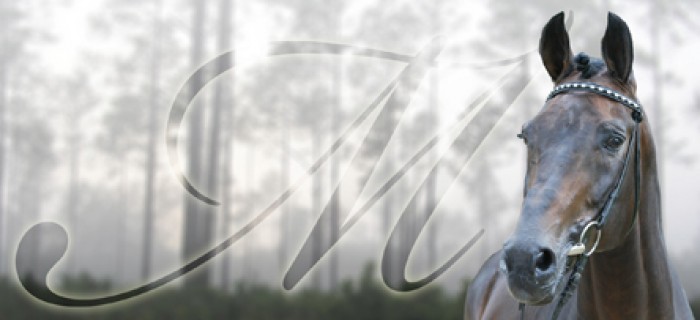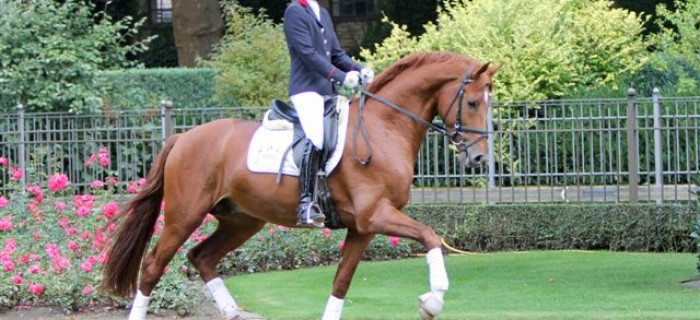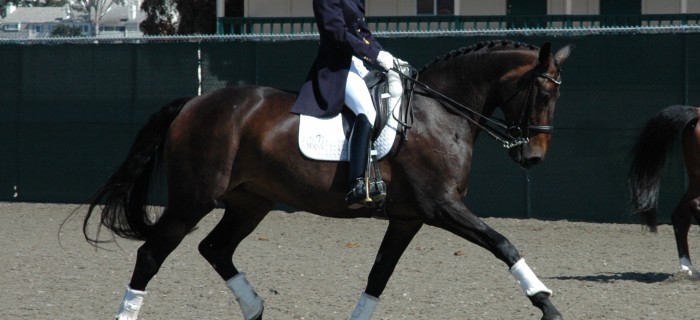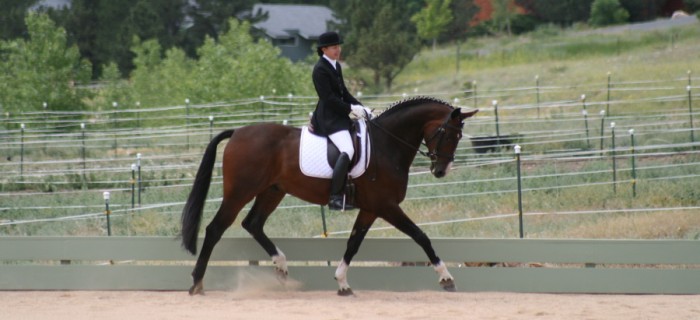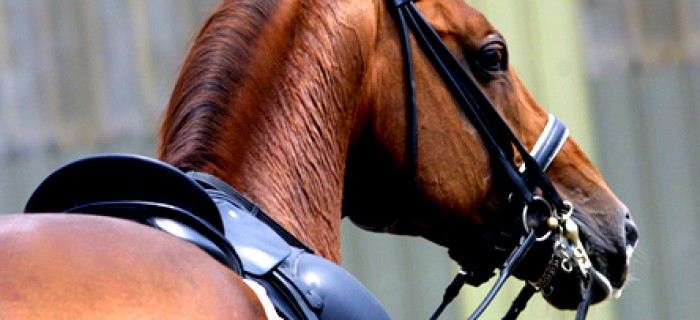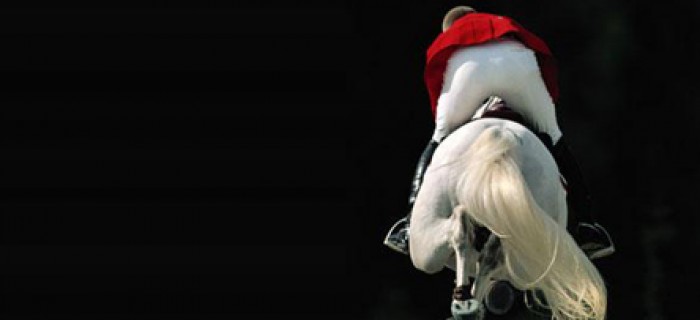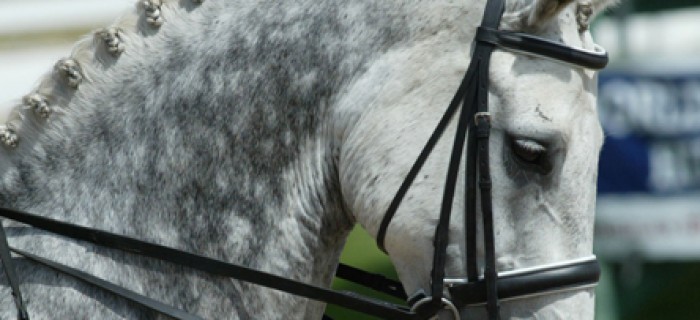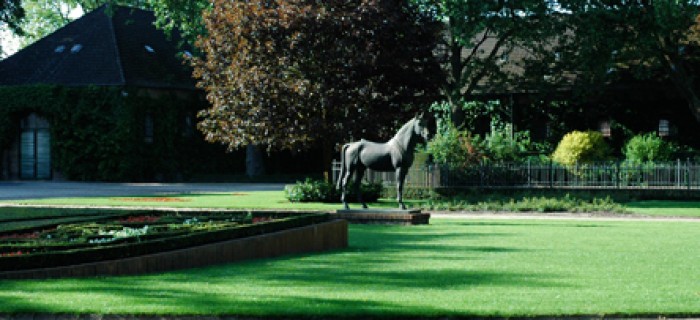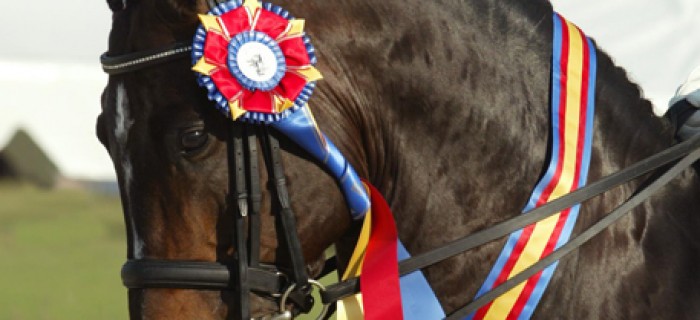1. Precondition for the development of the half pirouette
The half pirouette out of the medium walk and the half pirouette out of the full halt is a lesson that helps to develop the collection of your horse and achieve throughness.
The half pirouette out of the walk is ridden out of the medium walk. The half pirouette out of the full halt is ridden out of a correct full halt.
The walk is a pacing movement in four beats and eight phases without momentum, meaning: the horse does not have a moment with all four legs in the air. The eight phases are:
• Three leg support
• Diagonale two leg support
• Three leg support
• Laterale two leg support
• Three leg support
• Diagonale two leg support
• Three leg support
• Laterale two leg support
a. Precondition of your horse
The horse has to be in a secure contact and sensitive to the rider’s aids. He needs to know the beginning of the lateral aids. Moreover he must be able to walk in a clear four beat in secure contact and correct bending.
b. Precondition of the rider
The rider has to have a secure balanced seat and has to know the necessary aids fort he half pirouette.
2. Aids for the half pirouette
Both forms of half pirouettes will be started with several half halts to make your horse attentive. Regarding the half halts refer to our April article. The half halts are especially important while starting the half pirouette out of the medium walk in order to get a small circle of the hind legs and a correct lesson.
The aids of both forms of the half pirouette do not have differences and are the following:
• Put your weight on your inner seat bone,
• the horse’s neck is bent into the direction of the movement,
• your inner leg is giving an forward impulse in the position at the saddle girth,
• your outside leg is in the position a hand behind the girth controlling the horse’s outside hind leg. This is not an lateral aid, it is only controlling the outside leg. With an lateral aid the horse would make a lateral step with the outside hind leg thus crossing the hind legs which is incorrect,
• the inner rein can have a slightly lateral aid to start the turn,
• the outside rein controls the bending but is elastic enough to let the horse move toward the turn. Do not press your horse into the lateral movement with the outside rein.
The horse is not allowed to walk back, the rider has to have the horse in front of his leg moving forward. The turning point has to be around the horse’s inner hind leg, which moves in the rhythm of the walk. After the turn the horse stands a bit besides the lead and will be led back to the lead with one or two forward-sideward steps. All this will be done in a constant movement and flow with a correct bending to the movement direction. The half pirouette out of the walk ends with the correct walk of the horse on the other lead. The half pirouette out of the full halt ends with a correct full halt.
aids for the half pirouette to the left
aids for half pirouette to the right
symbols :
3. Exercises for the development of the half pirouettes
The rider starts the development of the half pirouette with riding walk with a correct bending of the horse. Therefore, it is usual to start the half pirouette out of the walk and later add the half pirouette out of the full halt.
Start riding on a circle with a correct four-beat walk and a correct bending of the horse. Then start making the circle smaller in a shoulder fore with a lateral leading inner rein. The outside rein and the outside rider’s leg prevent the horse from falling over his shoulder. Regarding the shoulder fore and the shoulder in refer to our previous article.
In a second exercise, ride on a half arena (A-F-B-X-E-K-A on the left lead for example). The corners of this square will be ridden around the inner rider’s leg. The horse’s forehand turns around the horse’s hind legs. Do not forget to make sure the four beat rhythm of the walk stays correctly. The hind legs move in the rhythm of the walk. Prior to this “half-half pirouettes” you have to ride on your horse’s crooked side in the position 2, on the other side in shoulder fore.
Again (refer to our previous articles regarding riding in position 1 and 2) Shoulder fore („Position 1“): The horse steps with his inner hind leg in the direction between his front legs, with the outside leg into the lead of the outside front leg. From the front you will see the inner hind leg between the front legs. Thus the horse has a slight bending in the rib cage.
The aids for Position 1 are:
– weight on the inner seat bone,
– inner leg has a forward aid at the girth,
– outside leg controls the outside horse’s hind leg a hand behind the girth,
– inside rein gives the horse’s neck an inside position,
– outside rein controls this position.
Riding in position („Position 2“): The horse moves with the inner leg pair on the lead. The outside hind leg moves between the front legs. Looking from the front you see the outside hind hoof appear between the horse’s front legs. The horse’s ribcage is slightly bend.
The aids are not much different from position 1. The inside rider’s leg has to keep the horse’s inside hind leg active, the outside leg positions the horse’s outside hind leg between the front legs.
In the further development the circle of inner hind leg gets smaller. Nevertheless, it is important to control the correct four-beat rhythm of the walk. Later on you can develop the full pirouette out of the half pirouette where the hind legs move in a full small circle without crossing.
Do not forget to put a lot of variation into your horse’s training, keeping him attentive and let him enjoy his development. Do not overstrain it and take your time to develop this lesson. Taking your time with this lesson will safe time in the further development of lateral movements because with this exercises your horse will start to understand the nature of lateral aids and this is a first beginning for the next steps: half passes and later on pirouettes in the canter. Do not forget to tell him that he did wonderful when he makes progress and do not neglect the cool down phase. And over all:
Enjoy riding!
Adriane
Share
